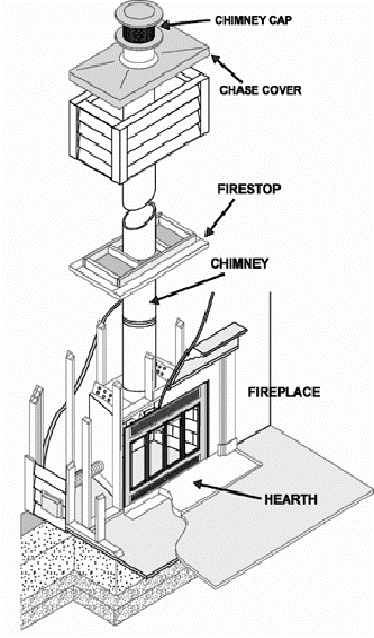Factory-Built Fireplaces
There’s nothing like coming home and warming up next to a roaring fire during the long, cold months of winter, or even chilly evenings in any season. Long commutes to work in the cold and the increasingly short hours of daylight in the fall and winter are made more bearable by the comfort and familiarity of family gatherings by the fire. It may be for this reason that some type of wood-burning enclosure has remained a staple of many households, even though open fire is no longer a necessity for cooking and heating. With this in mind, let's take a look at one of the more modern options available, the factory-built fireplace.
What is a factory-built fireplace and how does it differ from a masonry fireplace?
The traditional masonry fireplace is based largely on the innovations of Count Rumford, an18th-century inventor. His applied theories on thermodynamics led to the design of a restricted chimney opening to increase updraft, which allowed fire to burn in an enclosure without smoke filling the room. Rumford’s design quickly achieved wide popularity in London households, and he became something of a celebrity as news of his innovation spread. 
Zero Clearance
Factory-built fireplaces are also often called “zero-clearance” fireplaces because of their minuscule safe-clearance requirements. An insulating air blanket is incorporated in the design to keep the outer wall of the fireplace cool, which allows safe installation in very close proximity to wood framing. In general, ½-inch of clearance to combustibles is required around the outside of the firebox enclosure, and 2 inches of clearance are required around the chimney, except where the firestop is installed if a chimney passes through two levels of a house. Different manufacturers may have different suggested clearances, and it is important for installers to note this fo r proper and safe installation.
r proper and safe installation.
Safety and Maintenance
Factory-built fireplaces pass rigorous testing standards established by the Underwriters Laboratories and the American Gas Association. Properly installed, factory-built fireplaces have an excellent safety record. However, as in any situation where an open flame is involved, there are some things to keep in mind in order to avoid any risk of fire hazard.
If the fireplace is installed on top of any combustible material, such as carpet or wood, it must rest on a metal or tile panel that extends the length and width of the appliance.
Any combustible flooring near the fuel opening must be insulated with non-combustible floor protection.
Room air-inlet and outlet grilles must be unobstructed.
The same fire-safety precautions that are used for a traditional fireplace should be observed when a factory-built fireplace is in use.

